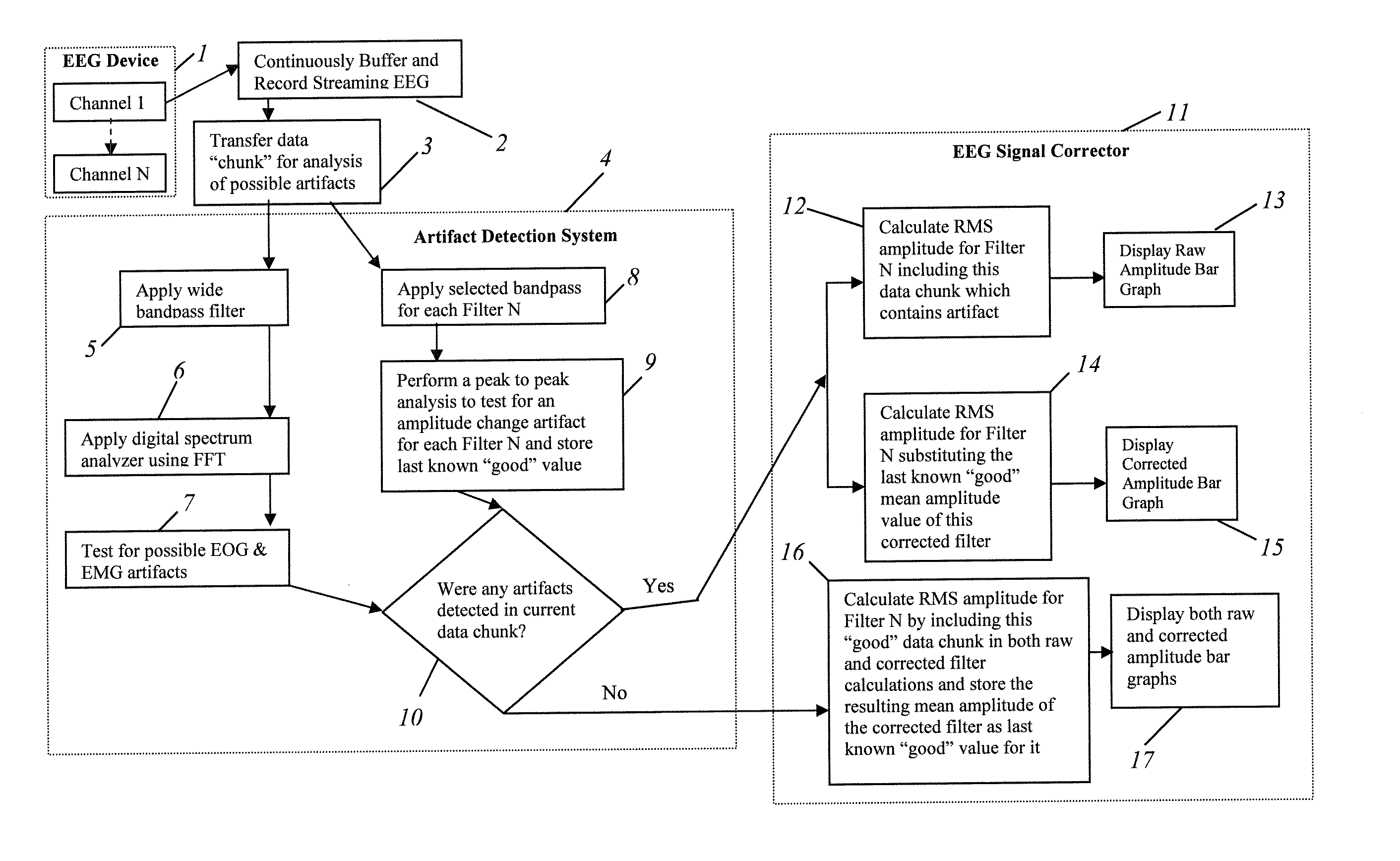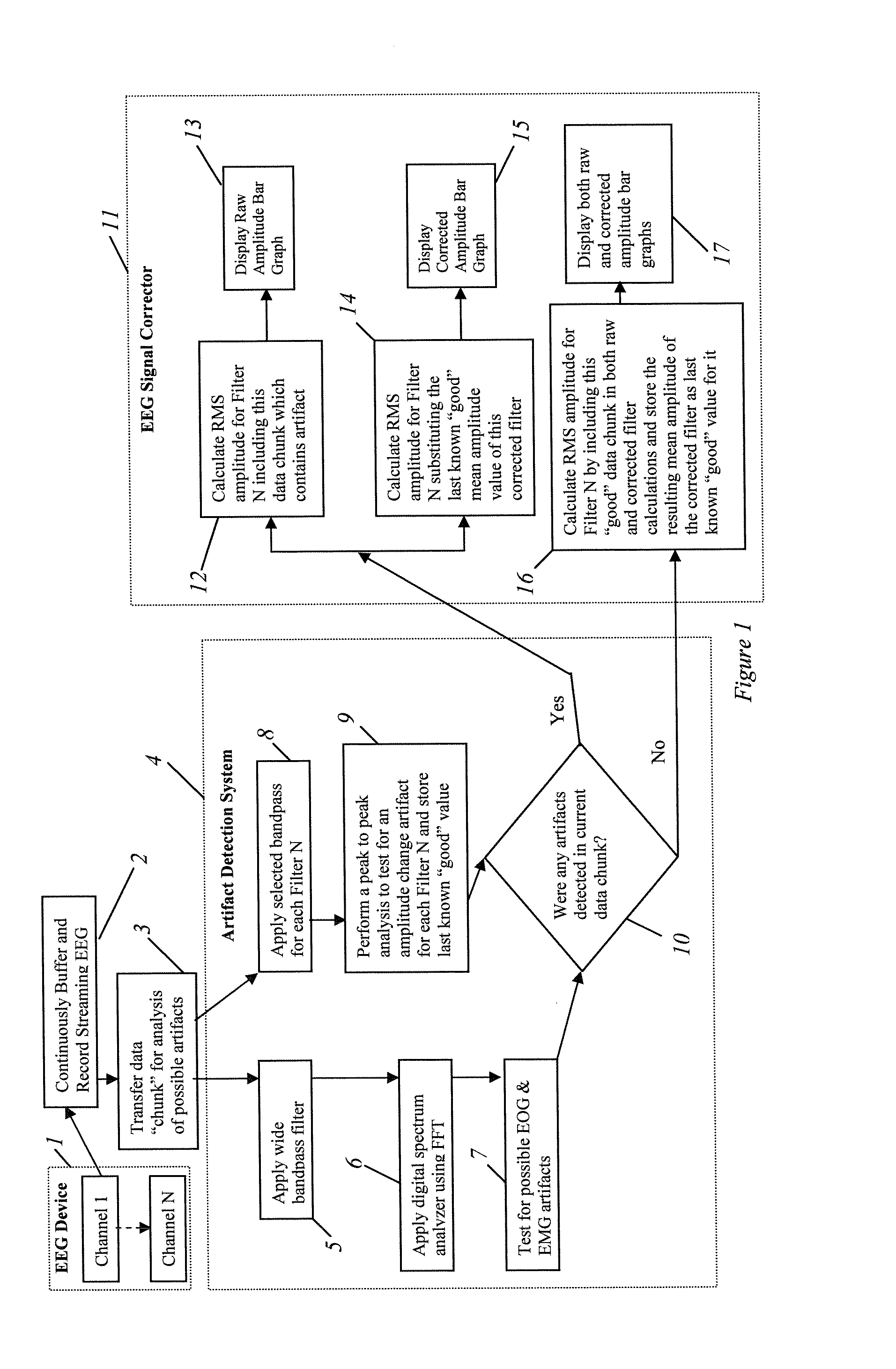Artifact detection and correction system for electroencephalograph neurofeedback training methodology
a correction system and electroencephalograph technology, applied in the field of artifact detection and correction system for electroencephalograph neurofeedback training methodology, can solve problems such as the substitution of good data, and achieve the effects of facilitating the speed and ease of this process, more accurate feedback, and convenient processing
- Summary
- Abstract
- Description
- Claims
- Application Information
AI Technical Summary
Benefits of technology
Problems solved by technology
Method used
Image
Examples
Embodiment Construction
[0021]The subject method provides for the simultaneous and concurrent 1) identification and 2) detection in real-ime of a variety of different types of electrooculographic (EOG), electromyographic (EMG) and related muscular and / or environmentally generated artifacts that spontaneously and / or volitionally occur that impair neurofeedback training particularly in the frontal and temporal lobe regions of the brain where EOG and EMG artifact activity is often more prevalent. When one or more artifacts are detected, the measurement and analysis of the EEG is corrected. This occurs in real-time and is completed before the EEG feedback signal is recorded to measure progress or presented to the trainee in visual and / or auditory tactile format. This artifact detection and the subsequent mathematical algorithmic correction of the EEG is designed to provide the participant with more accurate feedback in order to facilitate the speed and ease of this process of the operant learning of EEG brainw...
PUM
 Login to View More
Login to View More Abstract
Description
Claims
Application Information
 Login to View More
Login to View More - R&D
- Intellectual Property
- Life Sciences
- Materials
- Tech Scout
- Unparalleled Data Quality
- Higher Quality Content
- 60% Fewer Hallucinations
Browse by: Latest US Patents, China's latest patents, Technical Efficacy Thesaurus, Application Domain, Technology Topic, Popular Technical Reports.
© 2025 PatSnap. All rights reserved.Legal|Privacy policy|Modern Slavery Act Transparency Statement|Sitemap|About US| Contact US: help@patsnap.com


